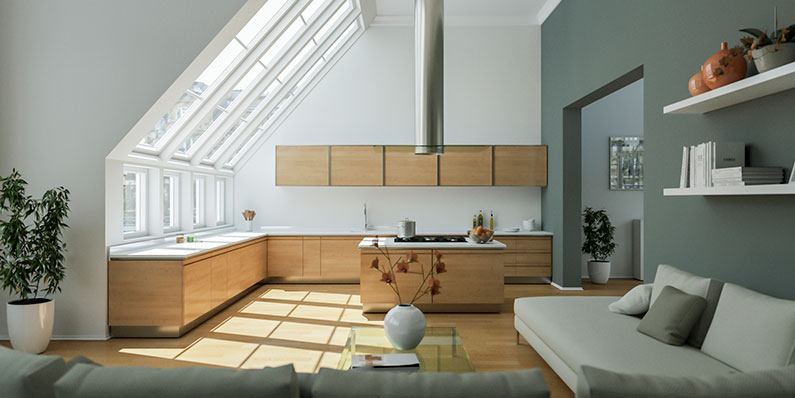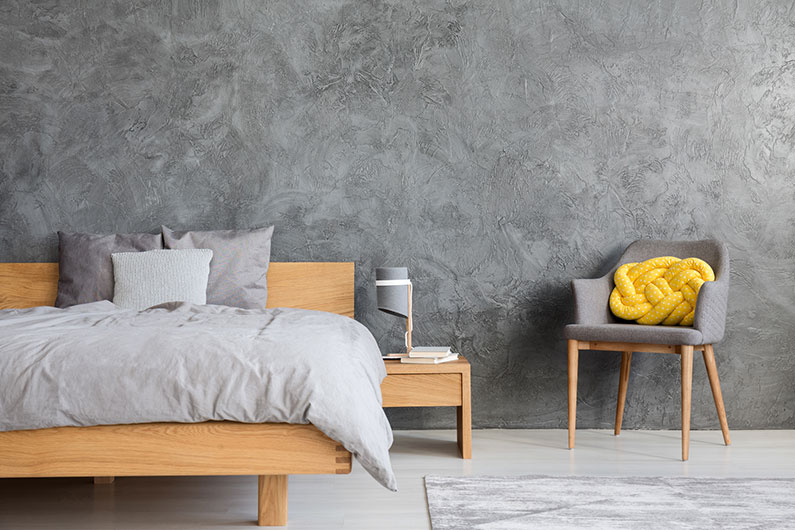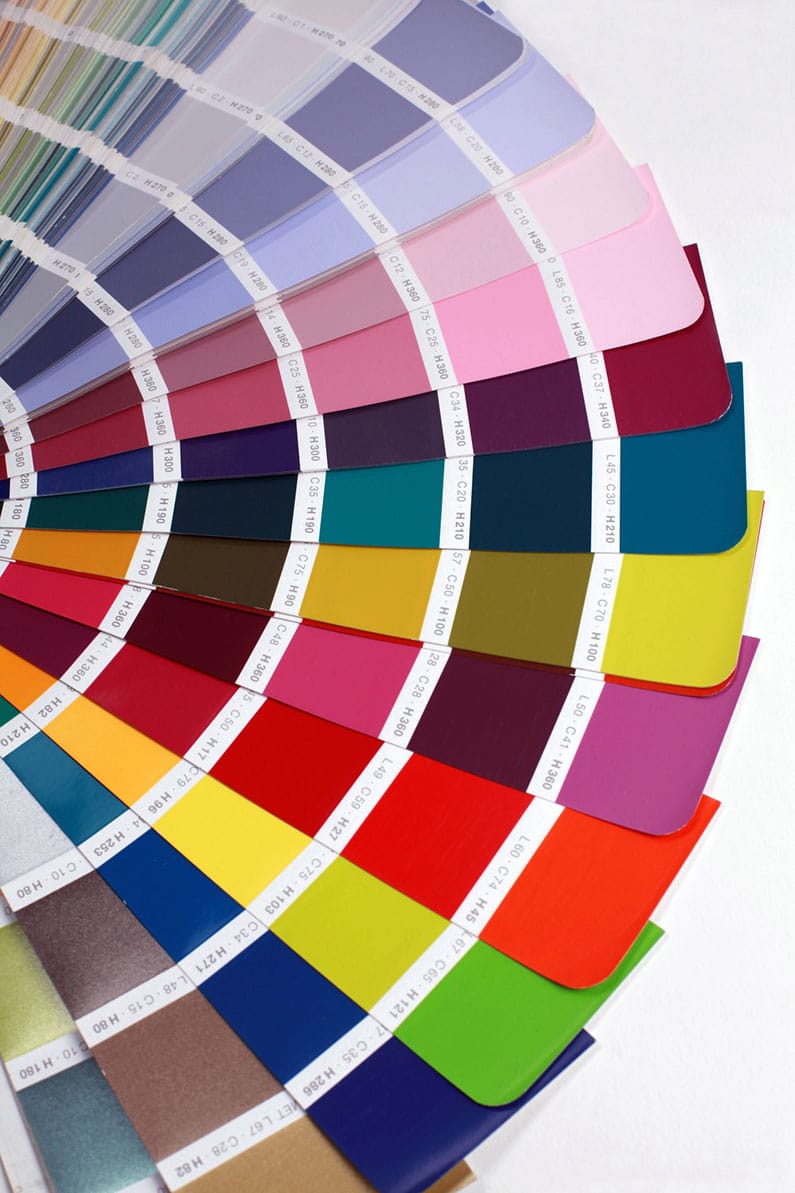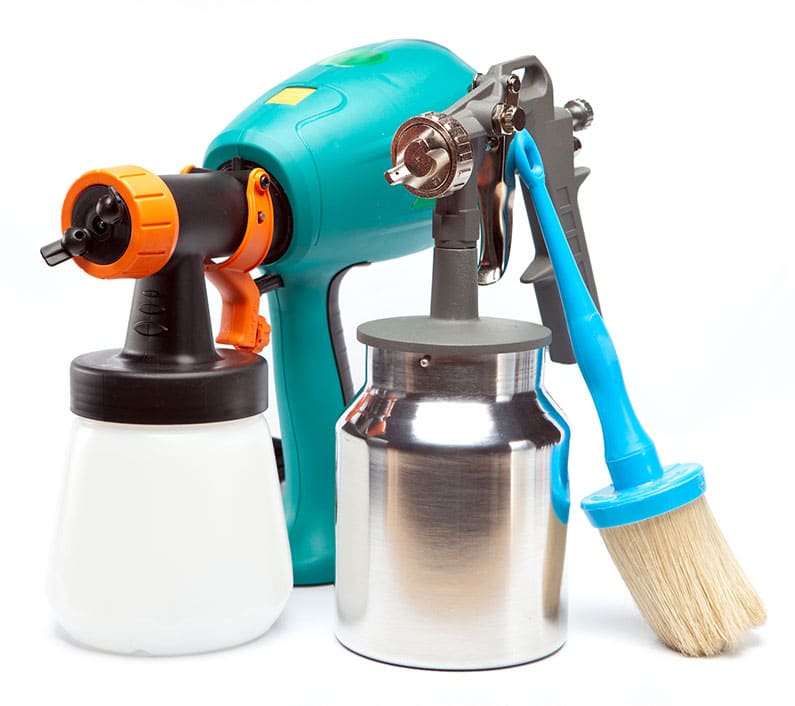
Not necessarily. Design has changed and prescriptive (and dated) 90s advice doesn’t hold as much sway anymore.
When choosing an accent wall in your home, almost anything is game. You want a mirror effect to create the illusion of space? Go for it. Maybe a ceiling a shade darker than the walls will look good? That’s also okay. Taste is subjective, after all.
As long as you aim for a high-quality finish and stay within the bounds of good design, the results should be stunning. This guide explains the tradition accent wall “rules” and shows you how to flout them for your own home improvement gain.

What Is an Accent Wall?
The (not-so)humble accent wall was very popular in the late 90s and early noughties. For that reason, accent walls are often considered dated today. But they are making a gradual comeback, especially in color-blocking decor schemes.
The Accent Wall “Rules”

Choosing the Right Color
For example, if you have a predominantly white room with a picture of bright yellow sunflowers, consider choosing a fresh lemon or green color to compliment this focal point. Or if you’d like to display your vibrancy and joie de vivre, choose a bold, delicious orange tone.
Remember, you have to live in the house, so go with what feels right for you and your style. Do consider the color of your other walls and objects in the room, though. Color wheel theory can help you choose accent wall colors that complement or wonderfully clash with existing decor. Check out Canva’s handy color selector tool here.
Another approach is to use an accent wall to subtly adjust a room’s feel. You can make rooms appear longer, bigger, and smaller through the use of color. For example, if you find a wall that’s shorter than the others, painting it in cool tones (like pastel green or blue) will visually lengthen the surface. Contrastingly, to shorten a long wall choose a warm hue like orange or red.
Besides plain colors, you can go with a pattern or even a giant wall mural.

The Right Tools for the Job
You could always use wallpaper for the task. For instance, if you want to turn a flat wall into a brick effect surface. But wallpaper accent walls require tools, mess — as the paste always seems to get everywhere, and a certain skill set. Plus, if you change your mind about the finish, wallpaper removal is a nightmare.
Another method is to giant wall decals. These are great if you want an image or a certain pattern on the surface. However, if you just want a block of color, then traditional latex or acrylic paint will do the job nicely.
If you decide to go down the paint route, you need the finest blemish-free finish imaginable. All eyes are going to be on this accent wall, after all. Sure, a brush or roller is a valid option, but it’s time-consuming and doesn’t always provide the even coverage you desire.
In my opinion, the best way to achieve rapid and flawless accent wall results is with a paint sprayer. Advancements in technology mean that small, handheld spray guns, such as the Wagner HVLP Contol Painter, are ideal for home decor enthusiasts.
Alternatively, if you’re painting the whole house and adding accent walls, the bigger yet still portable Graco 495 could be a better fit. The bonus with both these machines is that not only are they fast, but mess is kept to a minimum.
For the best advice on how to paint an accent wall in the living room with a paint sprayer, check out my five fun tips article.

Conclusion
Keep in mind that the rules are made to be broken, if you feel like making an accent wall with lots of windows and you think it will work, go for it. Just ensure that you have the proper tools for the job.
Additionally, choose a color that either complements or contrasts deeply with the surrounding area. For a smooth finish and a rapid result, consider using a paint sprayer when working with latex or acrylic mediums.
If our guide to picking an accent wall was inspiring, share it with your home improver and DIY guru friends!
How To Pick An Accent Wall FAQs
Q: What Wall Should Be an Accent Wall?
It’s entirely up to you! But you may choose to create a feature on the first wall you see when you enter a room. Remember that your accent wall will become a focal point, so choose wisely!
Q: How Many Accent Walls Should Be in a House?
You may be limited to one accent wall per room, but there’s no limit to the number of rooms that apply! If you feel like your bedroom and living room would both benefit from a feature wall, go for it.
Q: What Are Good Accent Wall Colors?
Traditionally, it was standard that accent walls could only be a shade or two away from the main color scheme used on other walls. These days the mold has been broken and this idea is banished, so choose whichever color you like!
Q: Are Accent Walls Supposed To Be Darker or Lighter?
There is no set rule over the darker or lighter accent wall debate. As long as it contrasts well or compliments the color scheme in the rest of the room, it will look great.
Q: How To Choose an Accent Wall in the Living Room?
Use the natural focal point of the room and add the accent there. Often, this is where you relax and kick back. For example, if you sit on the sofa, make a feature of the wall directly behind the sofa. Consider whether this is the first wall you see when you walk into the room, too.










